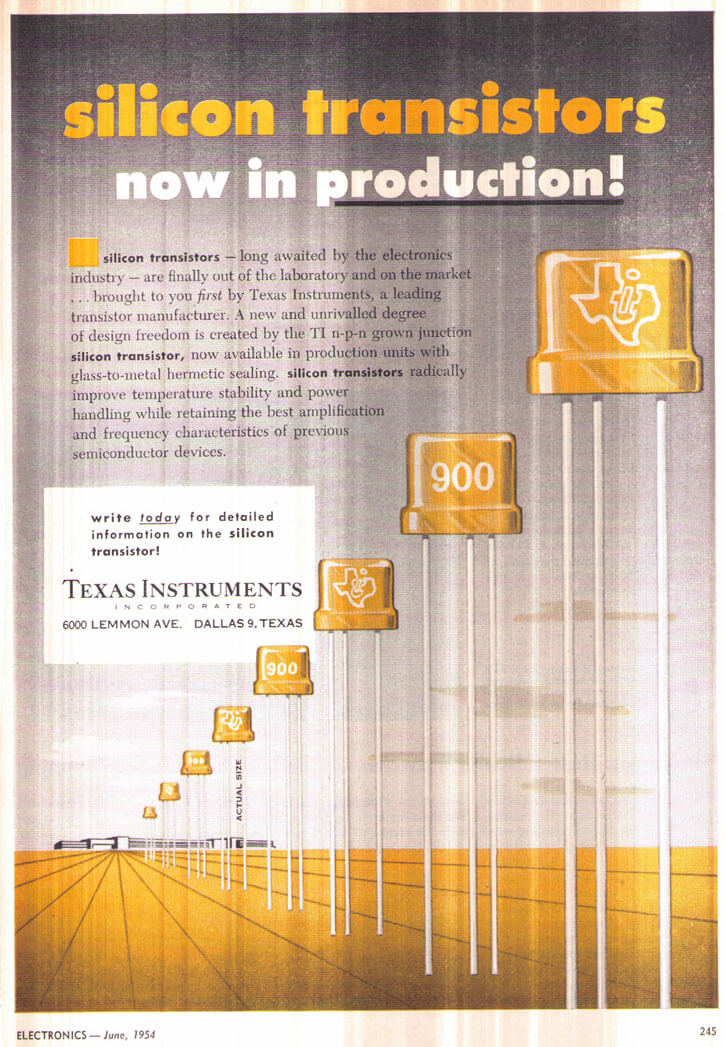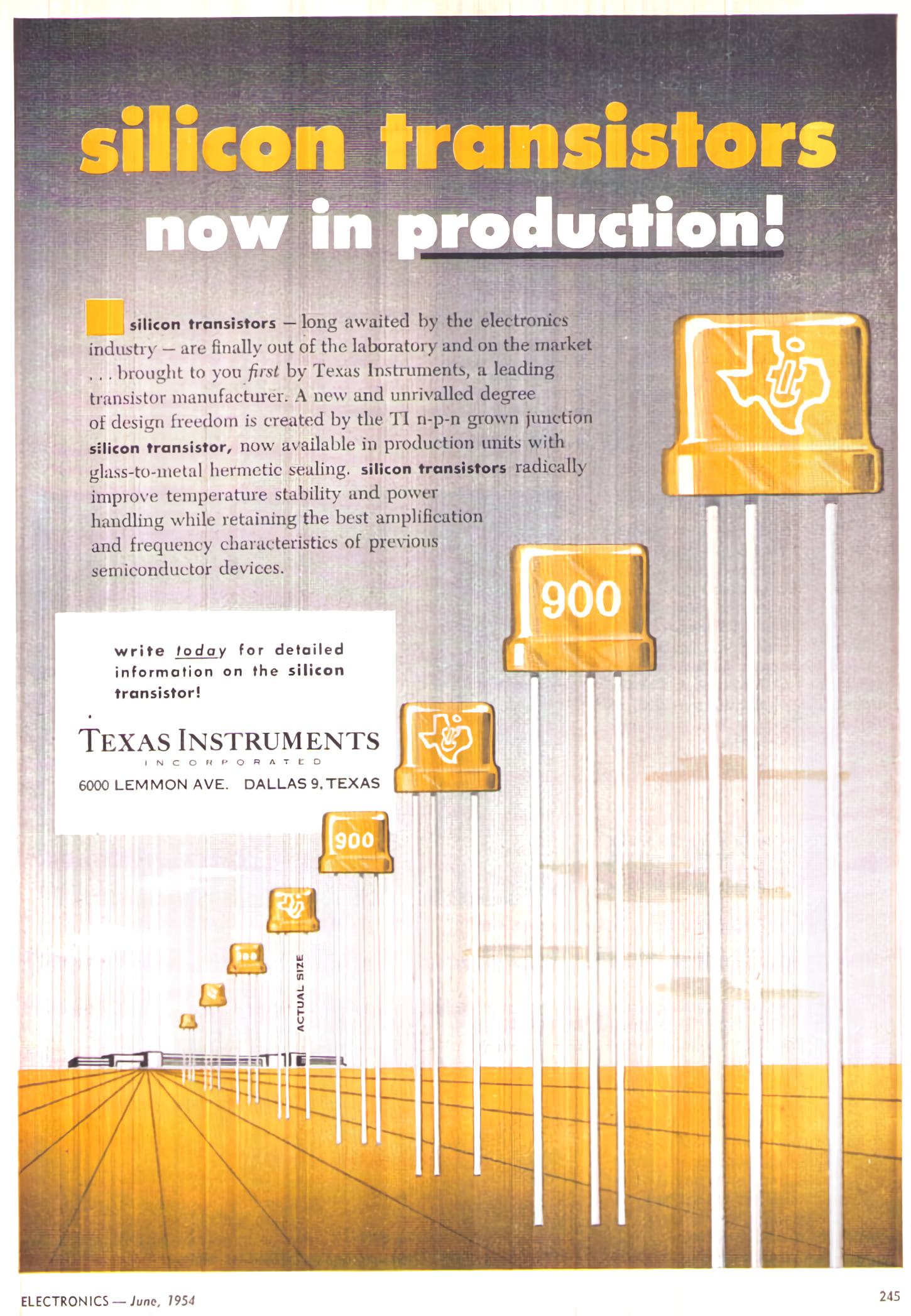- cross-posted to:
- hoch
- cross-posted to:
- hoch
So the cool part about this ad is that it’s a riff on a talk given on transistors in 1954. The guy who pioneered and perfected silicon transistors was named Gordon Teal and he was the first person to grow a Germanium junction transistor in 1948, so he was kind of a big deal. At a conference where he was supposed to speak, the speaker before him talked about the limits of Germanium and how Silicon was impossible to use so the advances of the future are doping Germanium.
In his pocket Gordon Teal had some silicon transistors, fresh from the lab, and his talk was about how he made transistors from silicon. Texas instruments was the first to use silicon and this ad was TI taking the piss out of the industry by saying “Hey, you know that impossible thing? We have it ready for you.”
…And dipped the amplifier in boiling oil to show their temperature resilience. Yes, I’ve seen the video.
Someone wants to enthusiastically join in, expanding on your post by adding context to an ad from 1954 and you take the piss? Instead you end up being a jerk.
Here is an alternative Piped link(s):
Piped is a privacy-respecting open-source alternative frontend to YouTube.
I’m open-source; check me out at GitHub.
Interesting how ads like this haven’t really changed in the past 70 years, though this particular format may finally die now that magazines are on their last legs.
I was struck by the address. That’s right outside Dallas Love Field in a pretty run down area, which happens to also border one of the wealthiest neighborhoods.
They’ve since moved quite a bit east to an enormous campus.
Is it weird that I kinda wanna frame it and hang it somewhere?
Too bad it’s a shitty scan and only available in 725x1047, from a website that claims
Texas Instruments engineer Gordon Teal invented the first silicon transistor based on germanium.
Which element is it, then?! You had one job!

I had to waifu2x to make it decent. You can take the isolated streaks at the top, stretch them with Krita and apply the Divide blend mode to “subtract” them from the image. I don’t think you can eliminate them completely without some special tools.

Alternatively, here is a streak-free but not much better scan from the Electronics Magazine from June 1954.
No



